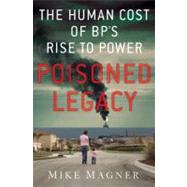
Mike Magner has been a journalist for more than 35 years, including 10 years as a reporter at the Kalamazoo (Michigan) Gazette, 15 years in the Washington Bureau for Newhouse Newspapers, and four years as an editor and writer at the National Journal. He was born and raised in South Bend, Indiana, graduated from Georgetown University, and lives outside Washington, D.C., with his wife, son and daughter. He began reporting on BP’s refinery pollution in Neodesha, Kansas, in 2002 and continues to follow the community’s efforts to require a cleanup of the contaminated site.
| Acknowledgments | p. vii |
| Introduction | p. xi |
| The Book of Common Prayer | p. 1 |
| The Rise of British Petroleum | p. 33 |
| The Three Pigs | p. 57 |
| Smart Pigs | p. 85 |
| The Lord's Demise | p. 107 |
| Liars Versus Politicians | p. 133 |
| Faded Green | p. 151 |
| "Nightmare Well" | p. 169 |
| The Beast | p. 207 |
| Lost Lives and Livelihoods | p. 271 |
| Tiny Sea Horses | p. 323 |
| Dollars and Deaths | p. 345 |
| Notes | p. 381 |
| Sources | p. 397 |
| Index | p. 399 |
| Table of Contents provided by Ingram. All Rights Reserved. |
The New copy of this book will include any supplemental materials advertised. Please check the title of the book to determine if it should include any access cards, study guides, lab manuals, CDs, etc.
The Used, Rental and eBook copies of this book are not guaranteed to include any supplemental materials. Typically, only the book itself is included. This is true even if the title states it includes any access cards, study guides, lab manuals, CDs, etc.